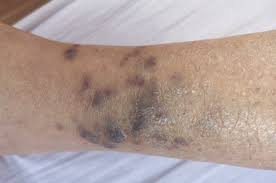
Köhler disease, also known as osteochondrosis of the navicular bone, is a rare condition that affects the navicular bone in the foot. It is most commonly seen in children between the ages of 5 and 10 years old, and is more common in boys than girls.
The exact cause of Köhler disease is unknown, but it is believed to be related to a disruption in blood flow to the navicular bone. This can lead to a decrease in bone density and the development of small fractures in the bone.
Symptoms of Köhler disease typically include pain and swelling in the midfoot, particularly on the top of the foot. The affected foot may also appear flattened or widened, and there may be a limp or difficulty walking.
Treatment for Köhler disease usually involves rest and immobilization of the foot with a cast or brace to allow the bone to heal. Pain relievers may also be prescribed to manage discomfort. In rare cases, surgery may be necessary to remove damaged tissue or realign the bones in the foot. With appropriate treatment, most children with Köhler disease recover fully and have no long-term complications.

